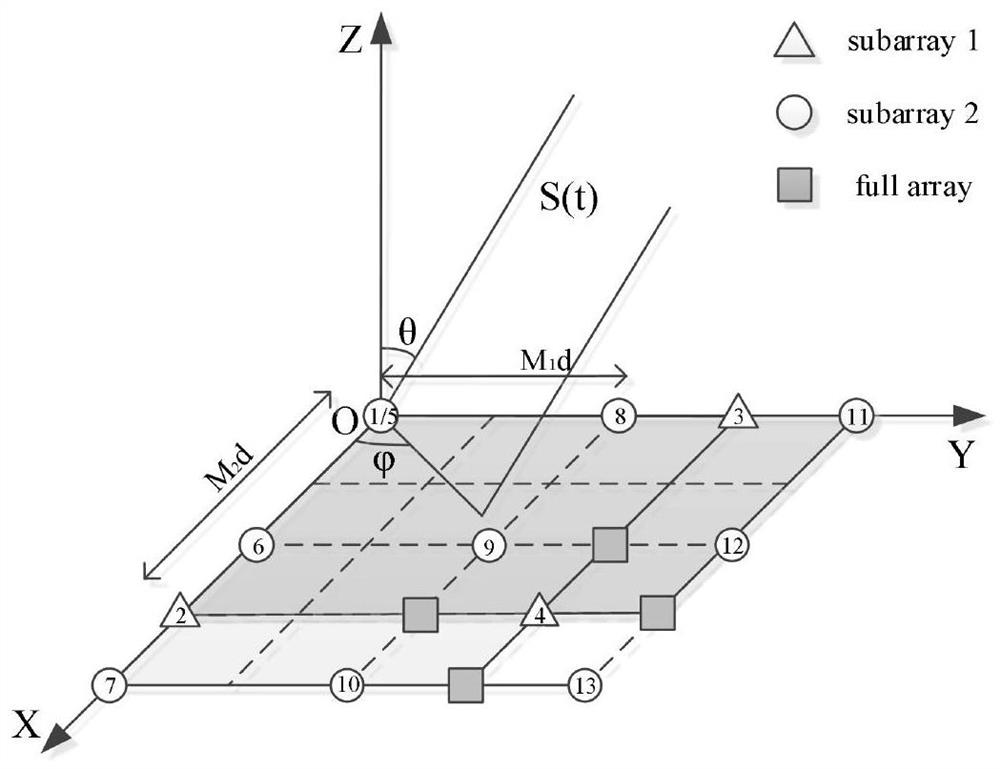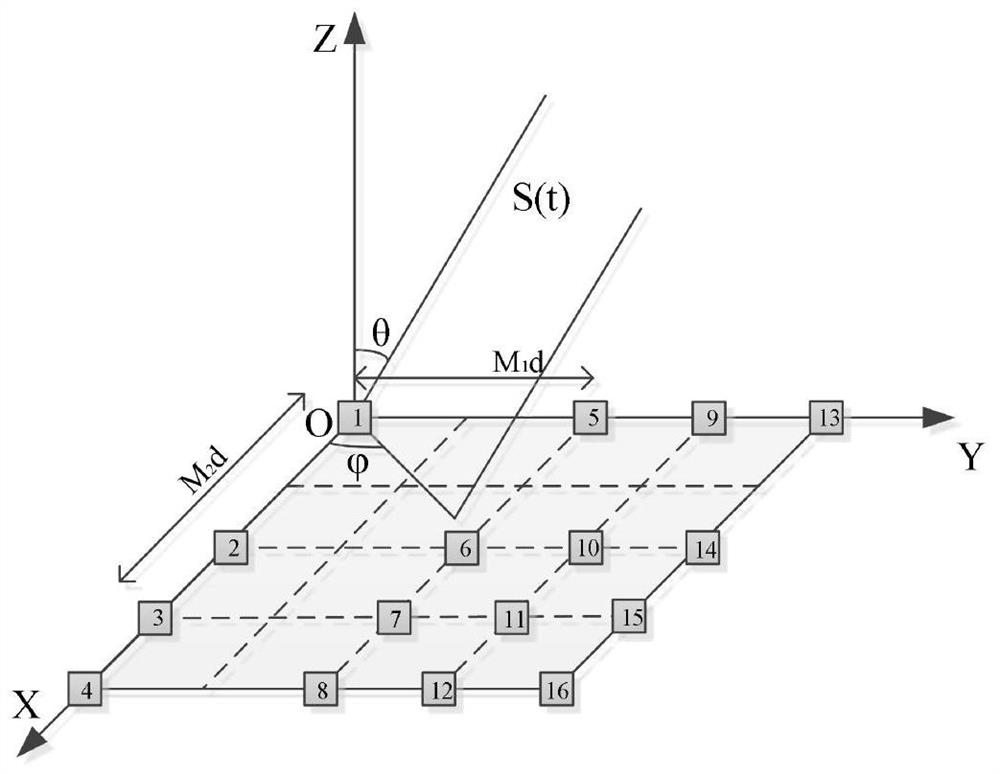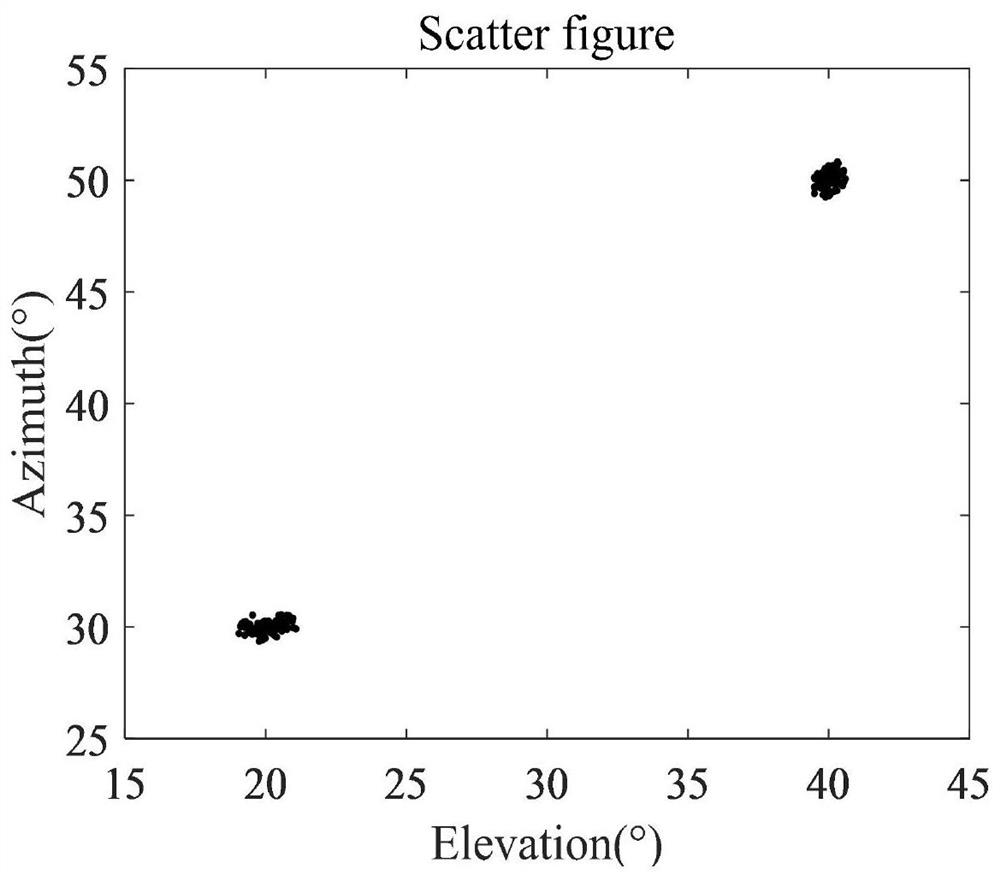Two-dimensional direction finding estimation method based on polynomial rooting in co-prime area array
A polynomial root-finding, root-finding polynomial technology, applied in design optimization/simulation, special data processing applications, complex mathematical operations, etc., can solve the problem of high computational complexity, achieve high precision, reduce the difficulty of root finding, and low complexity Effect
- Summary
- Abstract
- Description
- Claims
- Application Information
AI Technical Summary
Problems solved by technology
Method used
Image
Examples
Embodiment Construction
[0051] Below in conjunction with accompanying drawing and specific embodiment the technical solution of the present invention is described in further detail:
[0052] Symbol representation: in the present invention (·) T ,(·) H (·) -1 and(·)* Represented as transpose, conjugate transpose, inversion and conjugate operations, respectively. Bold uppercase letters represent matrices, bold lowercase letters represent vectors, Represents the Kronecker product, ⊙ represents the Khatri-Rao product, Rank(·) represents the rank of the matrix, det(·) represents the value of the determinant, and angle(·) represents the phase angle of the complex number.
[0053] Assuming that there are K narrow-band far-field incoherent sources incident on this coprime array, its two-dimensional direction of arrival is (θ k ,φ k ),k=1,2,…,K, where θ k and φ k Represent the elevation angle and azimuth angle of the kth source, respectively. The coprime plane array can be decomposed into two array e...
PUM
 Login to View More
Login to View More Abstract
Description
Claims
Application Information
 Login to View More
Login to View More - R&D
- Intellectual Property
- Life Sciences
- Materials
- Tech Scout
- Unparalleled Data Quality
- Higher Quality Content
- 60% Fewer Hallucinations
Browse by: Latest US Patents, China's latest patents, Technical Efficacy Thesaurus, Application Domain, Technology Topic, Popular Technical Reports.
© 2025 PatSnap. All rights reserved.Legal|Privacy policy|Modern Slavery Act Transparency Statement|Sitemap|About US| Contact US: help@patsnap.com



